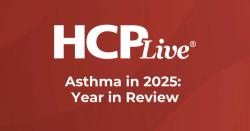
OR WAIT null SECS
Virtual Inhaler Use Education Improves Patient Technique
A comparison of virtual training to in-person education showed the former was noninferior to the latter among patients with asthma or COPD.
Valerie G. Press, MD, MPH
Telemedicine-based inhaler education may be as effective as in-person instruction, according to a new study.
A new assessment of patients with asthma or chronic obstructive pulmonary disease (COPD) treated with inhaler therapy found that a tablet-based virtual education module was noninferior to in-person education in improving correct inhaler technique.
The findings provide assurance to another avenue of improved patient inhaler technique education—at a time when such measures are greatly needed. Recent research has shown up to 40% of inhaler users are unable to perform a perfect inhalation in a clinical setting.
A team of University of Chicago investigators—led by Valerie G. Press, MD, MPH, of the Department of Medicine—conducted the equivalence and noninferiority clinical trial with 118 general inpatient ward-admitted adults with an obstructive lung disease. Patients were randomized 1:1 to either virtual (n = 61) or in-person (n = 60) educational interventions for inhaler technique.
The virtual education was provided via handheld tablet, with self-assessment questions, a narrated video demonstration, and post-demonstration self-assessment questions. The instruction was repeated for up to 3 rounds, as needed. In-person education entailed iterative inhaler technique assessment and education from trained staff.
Press and colleagues sought noninferiority of virtual education versus in-person per an equal percentage of patients with correct inhaler technique post-intervention. Correct technique was defined as >9 of 12 steps conducted correctly, with a priori noninferiority limit of -10%. They used logistic regression models to adjust for differences in baseline technique and health literacy, per the Short Test of Functional Health Literacy in Adults.
Almost all observed patients were black (n = 114 [97%]), and a majority were female (n = 76 [64%]), with a mean age of 54.5 years. More than half of all patients had COPD (n = 69 [58%]), and an adequate health literacy (n = 87 [74%]). Each intervention had 59 patients complete the intervention; 49 virtual intervention patients completed the 30-day follow-up, compared to 51 of the in-person patients.
Correct inhaler technique has increased similarly before versus after education in virtual patients (67%; range, 2-69) and in-person patients (66%; range, 17-83). However, the difference after intervention had exceeded the noninferiority limit by 4 percentage points (-14%; 95% CI lower bound, -26%).
When adjusting for baseline inhaler technique among patient groups, the difference was indeed equivalent to the noninferiority limit of -10%.
Press and colleagues noted the similar decline in inhaler technique performance after 30 days in both groups indicates the value of an at-home virtual education technique being available at any time for patients.
“This virtual approach has potentially important implications for increasing access to high-quality education because the virtual intervention likely has significantly lower costs and time constraints in real-world settings compared with the costs of training and delivering in-person education in hospital and at home,” they wrote.
The novel benefit of virtual inhaler technique training is not in its efficacy, but its ability to resolve the issue of systemic healthcare education barriers.
“Innovation appears to be necessary to solve the fundamental problem of how to deliver guideline-recommended care in real-world settings because the practice of relying on health care clinicians has not proved to be effective,” investigators wrote.
The team concluded virtual inhaler technique training may be nearly as effective as in-person education among adults with obstructive lung diseases who need help correcting misuse habits. That said, larger-scale pragmatic studies are needed to determine its value in improving long-term inhaler technique skills or even patient outcomes including exacerbations.
“This innovation could transform the ability of health care systems and individual clinicians to deliver guideline-recommended education for inhalers effectively with the goal of improving health outcomes and avoiding exacerbations,” they wrote.
The study, “Effectiveness of Virtual vs In-Person Inhaler Education for Hospitalized Patients With Obstructive Lung Disease,” was published online in JAMA Network Open.


